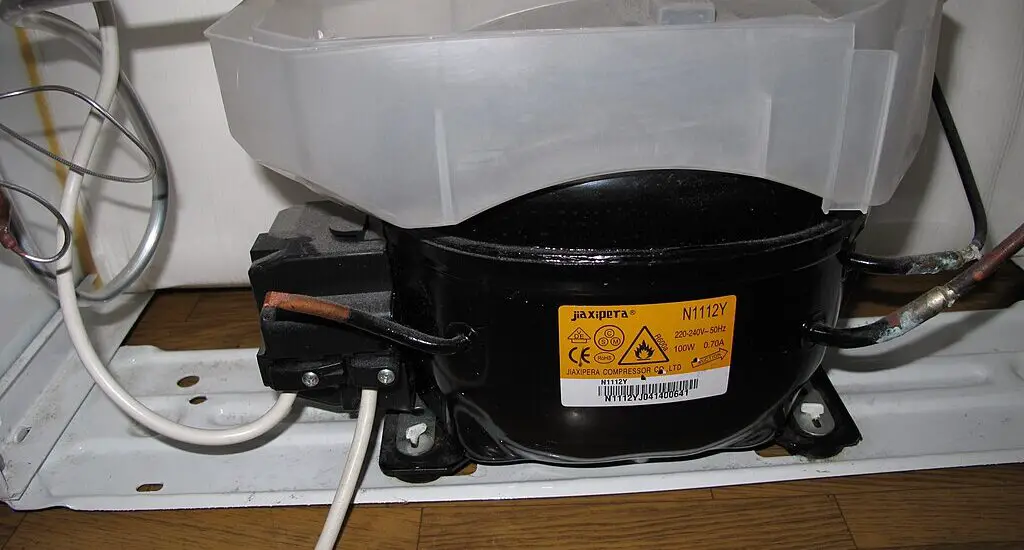If your refrigerator compressor does not turn off, understanding why this happens and how to solve it is crucial. This guide walks you through each step.

Table of Contents
Why Your Refrigerator Compressor Does Not Turn Off
Understanding the possible reasons why your refrigerator compressor does not turn off is foundational to solving the issue. Below are some common causes explained in greater detail:
Thermostat Issues: The thermostat is a sensor inside your refrigerator that determines when the compressor should turn on and off. If it’s malfunctioning, it may misread the temperature, signaling the compressor to keep running. Thermostats can fail due to wear and tear or electrical issues.
Faulty Door Seals: The seals around your refrigerator door are designed to keep cold air in and warm air out. If these are cracked or not sealing well, the cold air escapes. This will cause the compressor to work harder to keep the interior cold, and it may not turn off as a result.
Overstocked Fridge: While it might be convenient to stock up, an overloaded fridge can restrict the internal airflow. This makes it hard for the compressor to circulate cool air effectively, causing it to run longer to reach the set temperature.
Old Age: As refrigerators age, their efficiency can decline. Older models often have to work harder to maintain the same level of performance, leading the compressor to run more frequently or even continuously.
How to Troubleshoot a Refrigerator Compressor that Won’t Turn Off
Troubleshooting is your next step to determine the specific issue causing your refrigerator’s compressor to run constantly. Here’s a detailed look into how you can pinpoint the problem:
Check the Thermostat: The first step is to make sure the thermostat is set correctly. Locate it (usually it’s a knob or digital interface) and make sure it’s set to the manufacturer-recommended temperature, typically between 37 and 40 degrees Fahrenheit for the fridge and 0 degrees Fahrenheit for the freezer.
Inspect Door Seals: Close the door with a piece of paper half in and half out of the fridge. If you can pull the paper out easily, the seals are not working properly and need to be replaced. Repeat this for all the doors of your refrigerator.
Examine the Cooling Coils: Usually located at the back or underneath the refrigerator, cooling coils can collect dust over time. Unplug the refrigerator and use a vacuum cleaner or soft brush to clean them carefully. Make sure they are not damaged, as this could also lead to cooling issues.
Check out these other articles…
Refrigerator Compressor Buzzing Not Cooling: DIY Fix Guide
Refrigerator Compressor Banging Noise: 3 Quick Fixes
Refrigerator Compressor Bangs When Shutting Off: Easy Fixes
Refrigerator Compressor Clicks But Won’t Turn On: Solved
Refrigerator Compressor Disposal: A Step-by-Step Guide
Steps to Fix a Non-Stop Refrigerator Compressor
If you’ve identified the problem, here are the extensive steps to fix the issue with your compressor:
Replace the Thermostat
If your troubleshooting points to a faulty thermostat, it’s time to replace it. Usually, you can find the part number in your refrigerator’s manual. You can buy a replacement from an appliance store or online.
Turn off and unplug the refrigerator, locate the old thermostat, and replace it by following the manufacturer’s instructions or hire a technician.
Seal Replacement
If you’ve found that the seals are faulty, replacements can usually be found at appliance stores or through online retailers. You’ll need to remove the old seals, usually by undoing screws or clips, and then attach the new ones. Make sure to check that they are snug by performing the paper test again.
Contact Professional Help
If you are unable to identify or solve the problem yourself, it’s best to call in a qualified technician. This is particularly important for complex internal issues that require specialized tools and skills, like rewiring or replacing the compressor itself.